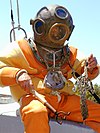Robert Boyle
The Honourable Robert William Boyle | |
|---|---|
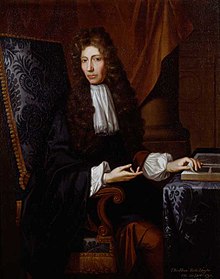 Robert William Boyle (1627–91) | |
| Born | 25 January 1627 |
| Died | 31 December 1691 (aged 64) |
| Nationality | Irish |
| Education | Eton College |
| Known for | |
| Awards | FRS (1663)[1] |
| Scientific career | |
| Fields | Physics, chemistry |
Robert William Boyle FRS[1] Template:Bdd was an Anglo-Irish[5] natural philosopher, chemist, physicist and inventor born in Lismore, County Waterford, Ireland. Boyle is largely regarded today as the first modern chemist, and therefore one of the founders of modern chemistry, and one of the pioneers of modern experimental scientific method. He is best known for Boyle's law,[6] which describes the inversely proportional relationship between the absolute pressure and volume of a gas, if the temperature is kept constant within a closed system.[7] Among his works, The Sceptical Chymist is seen as a cornerstone book in the field of chemistry. He was a devout and pious Anglican and is noted for his writings in theology.[8][9][10][11]
Biography
Early years
Boyle was born in Lismore Castle, in County Waterford, Ireland, the seventh son and fourteenth child of Richard Boyle, 1st Earl of Cork, and Catherine Fenton. Richard Boyle arrived in Dublin from England in 1588 during the Tudor plantations of Ireland and obtained an appointment as a deputy escheator. He had amassed enormous landholdings by the time Robert was born. Catherine Fenton was the daughter of Sir Geoffrey Fenton, the former Secretary of State for Ireland, who was born in Dublin in 1539, and Alice Weston, the daughter of Robert Weston, who was born in Lismore in 1541.[12]
As a child, Boyle was fostered to a local family,[13] as were his elder brothers. Boyle received private tutoring in Latin, Greek, and French and when he was eight years old, following the death of his mother, he was sent to Eton College in England. His father's friend, Sir Henry Wotton, was then the provost of the college.
During this time, his father hired a private tutor, Robert Carew, who had knowledge of Irish, to act as private tutor to his sons in Eton. However, "only Mr. Robert sometimes desires it [Irish] and is a little entered in it", but despite the "many reasons" given by Carew to turn their attentions to it, "they practice the French and Latin but they affect not the Irish".[14] After spending over three years at Eton, Robert travelled abroad with a French tutor. They visited Italy in 1641 and remained in Florence during the winter of that year studying the "paradoxes of the great star-gazer" Galileo Galilei, who was elderly but still living in 1641.
Middle years
Boyle returned to England from continental Europe in mid-1644 with a keen interest in scientific research.[15] His father had died the previous year and had left him the manor of Stalbridge in Dorset, England and substantial estates in County Limerick in Ireland that he had acquired. From that time, Robert devoted his life to scientific research and soon took a prominent place in the band of enquirers, known as the "Invisible College", who devoted themselves to the cultivation of the "new philosophy". They met frequently in London, often at Gresham College, and some of the members also had meetings at Oxford.
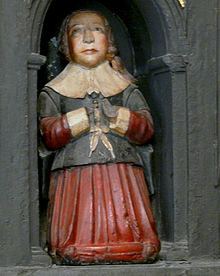
Having made several visits to his Irish estates beginning in 1647, Robert moved to Ireland in 1652 but became frustrated at his inability to make progress in his chemical work. In one letter, he described Ireland as "a barbarous country where chemical spirits were so misunderstood and chemical instruments so unprocurable that it was hard to have any Hermetic thoughts in it."[16]
In 1654, Boyle left Ireland for Oxford to pursue his work more successfully. An inscription can be found on the wall of University College, Oxford the High Street at Oxford (now the location of the Shelley Memorial), marking the spot where Cross Hall stood until the early 19th century. It was here that Boyle rented rooms from the wealthy apothecary who owned the Hall.
Reading in 1657 of Otto von Guericke's air pump, he set himself with the assistance of Robert Hooke to devise improvements in its construction, and with the result, the "machina Boyleana" or "Pneumatical Engine", finished in 1659, he began a series of experiments on the properties of air.[6] An account of Boyle's work with the air pump was published in 1660 under the title New Experiments Physico-Mechanicall, Touching the Spring of the Air, and its Effects.
Among the critics of the views put forward in this book was a Jesuit, Francis Line (1595–1675), and it was while answering his objections that Boyle made his first mention of the law that the volume of a gas varies inversely to the pressure of the gas, which among English-speaking people is usually called Boyle's Law after his name. The person who originally formulated the hypothesis was Henry Power in 1661. Boyle in 1662 included a reference to a paper written by Power, but mistakenly attributed it to Richard Towneley. In continental Europe the hypothesis is sometimes attributed to Edme Mariotte, although he did not publish it until 1676 and was likely aware of Boyle's work at the time.[17]
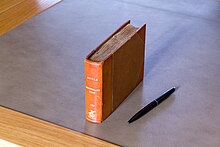
In 1663 the Invisible College became The Royal Society of London for Improving Natural Knowledge, and the charter of incorporation granted by Charles II of England named Boyle a member of the council. In 1680 he was elected president of the society, but declined the honour from a scruple about oaths.
He made a "wish list" of 24 possible inventions which included "the prolongation of life", the "art of flying", "perpetual light", "making armour light and extremely hard", "a ship to sail with all winds, and a ship not to be sunk", "practicable and certain way of finding longitudes", "potent drugs to alter or exalt imagination, waking, memory and other functions and appease pain, procure innocent sleep, harmless dreams, etc." They are extraordinary because all but a few of the 24 have come true.[18][19]
It was during his time at Oxford that Boyle was a Chevalier. The Chevaliers are thought to have been established by royal order a few years before Boyle's time at Oxford. The early part of Boyle's residence was marked by the actions of the victorious parliamentarian forces, consequently this period marked the most secretive period of Chevalier movements and thus little is known about Boyle's involvement beyond his membership.
In 1668 he left Oxford for London where he resided at the house of his elder sister Katherine Jones, Lady Ranelagh, in Pall Mall. His contemporaries widely acknowledged Katherine's influence on his work, but later historiographies dropped her from the record. Theirs was "a lifelong intellectual partnership, where brother and sister shared medical remedies, promoted each other’s scientific ideas, and edited each other’s manuscripts."[20]
Later years

In 1669 his health, never very strong, began to fail seriously and he gradually withdrew from his public engagements, ceasing his communications to the Royal Society, and advertising his desire to be excused from receiving guests, "unless upon occasions very extraordinary", on Tuesday and Friday forenoon, and Wednesday and Saturday afternoon. In the leisure thus gained he wished to "recruit his spirits, range his papers", and prepare some important chemical investigations which he proposed to leave "as a kind of Hermetic legacy to the studious disciples of that art", but of which he did not make known the nature. His health became still worse in 1691, and he died on 31 December that year,[21] just a week after the death of the sister with whom he had lived for more than twenty years. Boyle died from paralysis. He was buried in the churchyard of St Martin-in-the-Fields, his funeral sermon being preached by his friend Bishop Gilbert Burnet. In his will, Boyle endowed a series of Lectures which came to be known as the Boyle Lectures.
Scientific investigator
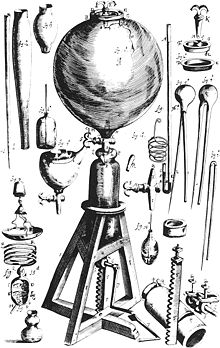
Boyle's great merit as a scientific investigator is that he carried out the principles which Francis Bacon espoused in the Novum Organum. Yet he would not avow himself a follower of Bacon, or indeed of any other teacher. On several occasions he mentions that to keep his judgment as unprepossessed as might be with any of the modern theories of philosophy, until he was "provided of experiments" to help him judge of them, he refrained from any study of the Atomical and the Cartesian systems, and even of the Novum Organum itself, though he admits to "transiently consulting" them about a few particulars. Nothing was more alien to his mental temperament than the spinning of hypotheses. He regarded the acquisition of knowledge as an end in itself, and in consequence he gained a wider outlook on the aims of scientific inquiry than had been enjoyed by his predecessors for many centuries. This, however, did not mean that he paid no attention to the practical application of science nor that he despised knowledge which tended to use.
Robert Boyle was an alchemist;[22] and believing the transmutation of metals to be a possibility, he carried out experiments in the hope of achieving it; and he was instrumental in obtaining the repeal, in 1689, of the statute of Henry IV against multiplying gold and silver.[23] With all the important work he accomplished in physics – the enunciation of Boyle's law, the discovery of the part taken by air in the propagation of sound, and investigations on the expansive force of freezing water, on specific gravities and refractive powers, on crystals, on electricity, on colour, on hydrostatics, etc. – chemistry was his peculiar and favourite study. His first book on the subject was The Sceptical Chymist, published in 1661, in which he criticised the "experiments whereby vulgar Spagyrists are wont to endeavour to evince their Salt, Sulphur and Mercury to be the true Principles of Things." For him chemistry was the science of the composition of substances, not merely an adjunct to the arts of the alchemist or the physician. He endorsed the view of elements as the undecomposable constituents of material bodies; and made the distinction between mixtures and compounds. He made considerable progress in the technique of detecting their ingredients, a process which he designated by the term "analysis". He further supposed that the elements were ultimately composed of particles of various sorts and sizes, into which, however, they were not to be resolved in any known way. He studied the chemistry of combustion and of respiration, and conducted experiments in physiology, where, however, he was hampered by the "tenderness of his nature" which kept him from anatomical dissections, especially vivisections, though he knew them to be "most instructing".
Theological interests
In addition to philosophy, Boyle devoted much time to theology, showing a very decided leaning to the practical side and an indifference to controversial polemics. At the Restoration of the king in 1660, he was favourably received at court and in 1665 would have received the provostship of Eton College had he agreed to take holy orders, but this he refused to do on the ground that his writings on religious subjects would have greater weight coming from a layman than a paid minister of the Church.
As a director of the East India Company he spent large sums in promoting the spread of Christianity in the East, contributing liberally to missionary societies and to the expenses of translating the Bible or portions of it into various languages. Boyle supported the policy that the Bible should be available in the vernacular language of the people. An Irish language version of the New Testament was published in 1602 but was rare in Boyle's adult life. In 1680–85 Boyle personally financed the printing of the Bible, both Old and New Testaments, in Irish.[24] In this respect, Boyle's attitude to the Irish language differed from the English Ascendancy class in Ireland at the time, which was generally hostile to the language and largely opposed the use of Irish (not only as a language of religious worship).[25]
Boyle also had a monogenist perspective about race origin. He was a pioneer studying races, and he believed that all human beings, no matter how diverse their physical differences, came from the same source: Adam and Eve. He studied reported stories of parents' giving birth to different coloured albinos, so he concluded that Adam and Eve were originally white and that Caucasians could give birth to different coloured races. Boyle also extended the theories of Robert Hooke and Isaac Newton about colour and light via optical projection (in physics) into discourses of polygenesis,[26] speculating that maybe these differences were due to "seminal impressions". Taking this into account, it might be considered that he envisioned a good explanation for complexion at his time, due to the fact that now we know that skin colour is disposed by genes, which are actually contained in the semen. Boyle's writings mention that at his time, for "European Eyes", beauty was not measured so much in colour of skin, but in "stature, comely symmetry of the parts of the body, and good features in the face".[27] Various members of the scientific community rejected his views and described them as "disturbing" or "amusing".[28]
In his Will, Boyle provided money for a series of lectures to defend the Christian religion against those he considered "notorious infidels, namely atheists, deists, pagans, Jews and Muslims", with the provision that controversies between Christians were not to be mentioned (see Boyle Lectures).[29]
Awards and honours

As a founder of the Royal Society, he was elected a Fellow of the Royal Society (FRS) in 1663.[1] Boyle's law is named in his honour. The Royal Society of Chemistry issues a Robert Boyle Prize for Analytical Science, named in his honour. The Boyle Medal for Scientific Excellence in Ireland, inaugurated in 1899, is awarded jointly by the Royal Dublin Society and the The Irish Times.[30] Launched in 2012, The Robert Boyle Summer School organized by the Waterford Institute of Technology with support from Lismore Castle, is held annually to honor the heritage of Robert Boyle.[31]
Important works


The following are some of the more important of his works:
- 1660 – New Experiments Physico-Mechanical: Touching the Spring of the Air and their Effects
- 1661 – The Sceptical Chymist
- 1663 – Considerations touching the Usefulness of Experimental Natural Philosophy (followed by a second part in 1671)
- 1664 – Experiments and Considerations Touching Colours, with Observations on a Diamond that Shines in the Dark
- 1665 – New Experiments and Observations upon Cold
- 1666 – Hydrostatical Paradoxes[33]
- 1666 – Origin of Forms and Qualities according to the Corpuscular Philosophy, a continuation of his work on the spring of air demonstrated that a reduction in ambient pressure could lead to bubble formation in living tissue. This description of a viper in a vacuum was the first recorded description of decompression sickness.[34]
- 1670 – Tracts about the Cosmical Qualities of Things, the Temperature of the Subterraneal and Submarine Regions, the Bottom of the Sea, &tc. with an Introduction to the History of Particular Qualities
- 1672 – Origin and Virtues of Gems
- 1673 – Essays of the Strange Subtilty, Great Efficacy, Determinate Nature of Effluviums
- 1674 – Two volumes of tracts on the Saltiness of the Sea, Suspicions about the Hidden Realities of the Air, Cold, Celestial Magnets
- 1674 – Animadversions upon Mr. Hobbes's Problemata de Vacuo
- 1676 – Experiments and Notes about the Mechanical Origin or Production of Particular Qualities, including some notes on electricity and magnetism
- 1678 – Observations upon an artificial Substance that Shines without any Preceding Illustration
- 1680 – The Aerial Noctiluca
- 1682 – New Experiments and Observations upon the Icy Noctiluca (a further continuation of his work on the air)
- 1684 – Memoirs for the Natural History of the Human Blood
- 1685 – Short Memoirs for the Natural Experimental History of Mineral Waters
- 1686 – A Free Enquiry into the Vulgarly Received Notion of Nature
- 1690 – Medicina Hydrostatica
- 1691 – Experimentae et Observationes Physicae
Among his religious and philosophical writings were:
- 1648/1660 – Seraphic Love, written in 1648, but not published until 1660
- 1663 – An Essay upon the Style of the Holy Scriptures
- 1664 – Excellence of Theology compared with Natural Philosophy
- 1665 – Occasional Reflections upon Several Subjects, which was ridiculed by Swift in Meditation Upon a Broomstick, and by Butler in An Occasional Reflection on Dr Charlton's Feeling a Dog's Pulse at Gresham College
- 1675 – Some Considerations about the Reconcileableness of Reason and Religion, with a Discourse about the Possibility of the Resurrection
- 1687 – The Martyrdom of Theodora And Didymus
- 1690 – The Christian Virtuoso
See also
- Ambrose Godfrey, phosphorus manufacturer who started as Boyle's assistant
- Anaerobic digestion, history section
- An Experiment on a Bird in the Air Pump, a painting of a demonstration of one of Boyle's experiments
- Boyle temperature, thermodynamic quantity named after Boyle
- George Starkey
- Invisible College
- Lismore Castle
- List of people on stamps of Ireland
- Pneumatic chemistry
- Absolute zero
- Timeline of hydrogen technologies
References
- ^ a b c "Fellows of the Royal Society". London: Royal Society. Archived from the original on 16 March 2015.
- ^ O'Brien, John J. (1965). "Samuel Hartlib's influence on Robert Boyle's scientific development". Annals of Science. 21 (4): 257–276. doi:10.1080/00033796500200141. ISSN 0003-3790.
- ^ Newton, Isaac (February 1678). Philosophical tract from Mr Isaac Newton. Cambridge University.
But because I am indebted to you & yesterday met with a friend Mr Maulyverer, who told me he was going to London & intended to give you the trouble of a visit, I could not forbear to take the opportunity of conveying this to you by him.
{{cite encyclopedia}}: CS1 maint: year (link) - ^ Deem, Rich (2005). "The Religious Affiliation of Robert Boyle the father of modern chemistry. From: Famous Scientists Who Believed in God". adherents.com. Retrieved 17 April 2009.
- ^ "Robert Boyle". Encyclopedia Britannica. Retrieved 24 February 2016.
- ^ a b Acott, Chris (1999). "The diving "Law-ers": A brief resume of their lives". South Pacific Underwater Medicine Society journal. 29 (1). ISSN 0813-1988. OCLC 16986801. Retrieved 17 April 2009.
- ^ Levine, Ira N. (2008). Physical chemistry (6th ed. ed.). Dubuque, IA: McGraw-Hill. p. 12. ISBN 9780072538625.
{{cite book}}:|edition=has extra text (help) - ^ "Encyclopedia Britannica". Britannica.com.
- ^ MacIntosh, J. J.; Anstey, Peter. "Robert Boyle". In Zalta, Edward N. (ed.). Stanford Encyclopedia of Philosophy.
- ^ O'Connor, John J.; Robertson, Edmund F., "Robert Boyle", MacTutor History of Mathematics Archive, University of St Andrews
- ^ Works by Robert Boyle at Project Gutenberg
- ^ "Catherine Fenton", Family Ghosts, retrieved 9 June 2011
- ^ McCartney, Mark; Whitaker, Andrew (2003), Physicists of Ireland: Passion and Precision, London: Institute of Physics Publishing
- ^ Canny, Nicholas (1982), The Upstart Earl: a study of the social and mental world of Richard Boyle, Cambridge: Cambridge University Press, p. 127
- ^ See biographies of Robert Boyle at [1], [2], [3] and [4].
- ^ Silver, Brian L. (2000). The ascent of science. New York: Oxford University Press. p. 114. ISBN 978-0-19-513427-8.
- ^ Brush, Stephen G. (2003). The Kinetic Theory of Gases: An Anthology of Classic Papers with Historical Commentary. History of Modern Physical Sciences Vol 1. Imperial College Press. ISBN 9781860943478.
- ^ "Robert Boyle's prophetic scientific predictions from the 17th century go on display at the Royal Society". Telegraph.co.uk. 3 June 2010. Retrieved 24 February 2016.
- ^ "Robert Boyle's Wish list". Telegraph.co.uk. Retrieved 11 October 2016.
- ^ DiMeo, Michelle (4 February 2014). "'Such a Sister Became Such a Brother': Lady Ranelagh's Influence on Robert Boyle". Philadelphia Area Center for History of Science. Retrieved 5 February 2014.
- ^ Hunter, Michael (2003). Robert Boyle Reconsidered (Reprint ed.). Cambridge University Press. pp. xvii. ISBN 9780521892674.
- ^ More, Louis Trenchard (January 1941). "Boyle as Alchemist". Journal of the History of Ideas. 2 (1). University of Pennsylvania Press: 61–76. doi:10.2307/2707281. JSTOR 2707281.
- ^ MacIntosh, J. J.; Anstey, Peter (2010). "Robert Boyle". In Zalta, Edward N. (ed.). The Stanford Encyclopedia of Philosophy (Fall ed.). note 4.
- ^ Baines Reed, Talbot (1887), A History of the Old English Letter Foundries, pp. 189–90. Also Greenslade, S.L, ed. (1963), The Cambridge History of the Bible: The West from the Reformation to the Present Day, pp. 172–73.
- ^ Hastings, Adrian (1997). The Construction of Nationhood: Ethnicity, Religion, and Nationalism. Cambridge: Cambridge University. p. 86.
- ^ Boyle, Jen E. (2010). Anamorphosis in early modern literature : mediation and affect. Farnham, Surrey, [England]: Ashgate. p. 74. ISBN 1409400697.
- ^ "Experiments and Considerations Touching Colours (1664) (ebook)". www.gutenberg.net. Gutenberg Project. pp. 160–161. Retrieved 11 October 2016.
- ^ Palmeri, Frank (2006). Humans And Other Animals in Eighteenth-Century British Culture: Representation, Hybridity, Ethics. pp. 49–67.
- ^ "The Boyle Lecture". St. Marylebow Church.
- ^ http://www.strata3.com/, Strata3 -. "RDS - RDS-Irish Times Boyle Medal for Scientific Excellence". www.rds.ie. Retrieved 11 October 2016.
{{cite web}}: External link in|last1= - ^ "The Robert Boyle Summer School". Retrieved 11 October 2016.
- ^ Arthur W. J. G. Ord-Hume (2006). Perpetual Motion: The History of an Obsession. Adventures Unlimited Press. ISBN 1-931882-51-7.
- ^ Cf. Hunter (2009), p.147. "It forms a kind of sequel to Spring of the Air ... but although Boyle notes he might have published it as part of an appendix to that work, it formed a self-contained whole, dealing with atmospheric pressure with particular reference to liquid masses"
- ^ Acott, C. (1999). "A brief history of diving and decompression illness". South Pacific Underwater Medicine Society Journal. 29 (2). ISSN 0813-1988. OCLC 16986801. Retrieved 17 April 2009.
Further reading
- M. A. Stewart (ed.), Selected Philosophical Papers of Robert Boyle, Indianapolis: Hackett, 1991.
- Fulton, John F., A Bibliography of the Honourable Robert Boyle, Fellow of the Royal Society. Second edition. Oxford: At the Clarendon Press, 1961.
- Hunter, Michael, Boyle : Between God and Science, New Haven : Yale University Press, 2009. ISBN 978-0-300-12381-4
- Hunter, Michael, Robert Boyle, 1627–91: Scrupulosity and Science, The Boydell Press, 2000
- Principe, Lawrence, The Aspiring Adept: Robert Boyle and His Alchemical Quest, Princeton University Press, 1998
- Shapin, Stephen; Schaffer, Simon, Leviathan and the Air-Pump.
- Ben-Zaken, Avner, "Exploring the Self, Experimenting Nature", in Reading Hayy Ibn-Yaqzan: A Cross-Cultural History of Autodidacticism (Johns Hopkins University Press, 2011), pp. 101–126. ISBN 978-0801897399
- Boyle's published works online
- The Sceptical Chymist – Project Gutenberg
- Essay on the Virtue of Gems – Gem and Diamond Foundation
- Experiments and Considerations Touching Colours – Gem and Diamond Foundation
- Experiments and Considerations Touching Colours – Project Gutenberg
- Boyle Papers University of London
- Hydrostatical Paradoxes – Google Books
External links
- Works by or about Robert Boyle at the Internet Archive
- Readable versions of Excellence of the mechanical hypothesis and Origin of forms and qualities
- Robert Boyle Project, Birkbeck, University of London
- Summary juxtaposition of Boyle's The Sceptical Chymist and his The Christian Virtuoso
- The Relationship between Science and Scripture in the Thought of Robert Boyle
- Robert Boyle and His Alchemical Quest : Including Boyle's "Lost" Dialogue on the Transmutation of Metals, Princeton University Press, 1998, ISBN 0-691-05082-1
- Robert Boyle's (1690) Experimenta et considerationes de coloribus - digital facsimile from the Linda Hall Library
- This article incorporates text from a publication now in the public domain: Chisholm, Hugh, ed. (1911). "Boyle, Robert". Encyclopædia Britannica (11th ed.). Cambridge University Press.
 This article incorporates text from a publication now in the public domain: Cousin, John William (1910). "Boyle, The Hon. Robert". A Short Biographical Dictionary of English Literature. London: J. M. Dent & Sons – via Wikisource.
This article incorporates text from a publication now in the public domain: Cousin, John William (1910). "Boyle, The Hon. Robert". A Short Biographical Dictionary of English Literature. London: J. M. Dent & Sons – via Wikisource.
- 1627 births
- Irish Christians
- 1691 deaths
- Anglo-Irish people
- Discoverers of chemical elements
- Early Modern philosophers
- English alchemists
- English chemists
- English philosophers
- English physicists
- Founder Fellows of the Royal Society
- Gentleman scientists
- Irish alchemists
- Irish chemists
- Irish philosophers
- Irish physicists
- People educated at Eton College
- People from County Waterford
- Philosophers of science
- Boyle family
- Younger sons of earls
- 17th-century English writers
- 17th-century Irish writers
- 17th-century philosophers

